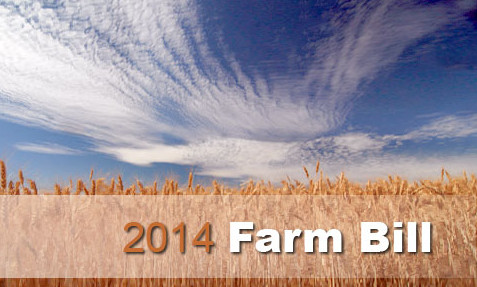
Last year, the USDA’s National Agricultural Statistics Service (NASS) conducted a survey of all landlord owners of agricultural land in the US. The survey, called the 2014 Tenure, Ownership, and Transition of Agricultural Land (TOTAL) Survey, was the first of its kind done by NASS since 1999.
The purpose of the survey was to provide updated information on land ownership income, expenses, debt, assets, and demographic landlord characteristics, in addition to survey questions addressing current farm issues. The results are representative of all agricultural land held by both operating and non-operating landlords in the contiguous 48 states.
The results provided a wealth of new information on landowners in Nebraska and across the nation. In Nebraska, 20.1 million acres of farmland are rented. There are 69,112 farmland landlords in the state, and of these, 11.864 are farmers, while 57,248 are non-farming landlords.
Some of the other TOTAL noteworthy findings include:
- 39 percent of all U.S. farmland is rented or leased
- 80 percent of all rented farmland is owned by non-farming landlords
- Rented farmland is valued at $1.1 trillion in total
- 91.5 million acres of farmland (or about 10 percent) are slated for ownership transfer in next 5 years
- only 21 million of these acres are expected to be sold to a non-relative.
Of these results, more than half of the farmland rented out by non-farming landlords was inherited. Of those landlords, 87 percent indicated that they are not currently farming. These results are fairly consistent with the results of the 1999 survey, indicating that rental trends have stayed relatively the same. Similarly, results such as those above are not necessarily surprising, as rented farmland is often owned by family members who have received land as part of an inheritance and hold no farming interests themselves. Similarly, many of these rented acres are owned by retired or widowed farmers who are no longer able to farm the land themselves.
Along this line, the survey results indicated that, on average, farmland owners are older than farmers, with the average age of farmers in the US being 58.3, compared to 66.5 for landlords, or non-farming owners of rented ground. Overall, more than half of principal landlords were age 65 years or older, at 57 percent. 18 percent were under 55 years old.
Perhaps the most noteworthy take away from the survey is what this means for the next generation of farmers, and raises important questions regarding the transfer of rented farmland over the next two decades. According to the survey, landowners in Nebraska reported that they expect to transfer 4.45 million acres to different owners in the next five years. Of these, 362,462 acres are expected to be sold to non-relatives, while 445,253 acres are expected to be kept in the family.
As such, new prospective farmers will continue to face challenges in finding acres to buy, with few farmland acres available. Our UFARM Land Managers can assist landowners, farmers and ranchers when looking for ways to lease, buy or sell land – contact us today!
Source consulted: “Who Owns US Farmland, and How Will it Change?” National Sustainable Agriculture Coalition. National Sustainable Agriculture Coalition. 18 Sep. 2015. Web. 30 Dec. 2015.


 The Agricultural Act of 2014, more commonly known as the Farm Bill, brought with it some changes that will have an impact on producers’ pocketbooks. Specifically, the latest Farm Bill specifies that producers will have a one-time opportunity to adjust their base acres and update their payment yields, thereby potentially increasing their program payments. The Bill also stipulates that producers elect the type of coverage they would prefer for crop years 2014-2018. The deadline—February 27, 2015—is fast approaching.
The Agricultural Act of 2014, more commonly known as the Farm Bill, brought with it some changes that will have an impact on producers’ pocketbooks. Specifically, the latest Farm Bill specifies that producers will have a one-time opportunity to adjust their base acres and update their payment yields, thereby potentially increasing their program payments. The Bill also stipulates that producers elect the type of coverage they would prefer for crop years 2014-2018. The deadline—February 27, 2015—is fast approaching. The Agricultural Act of 2014, more familiarly known as the Farm Bill, was finally passed in February, and since then the changes made in the final iteration of the bill are out in the open. Among the most significant changes for farmers and landowners—besides the end to direct payments—are the expanded insurance and revenue protection programs available. In place of DCP and ACRE programs, the new farm bill will offer:
The Agricultural Act of 2014, more familiarly known as the Farm Bill, was finally passed in February, and since then the changes made in the final iteration of the bill are out in the open. Among the most significant changes for farmers and landowners—besides the end to direct payments—are the expanded insurance and revenue protection programs available. In place of DCP and ACRE programs, the new farm bill will offer: